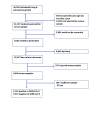Nationally representative SARS-CoV-2 antibody prevalence estimates after the first epidemic wave in Mexico
- PMID: 35105873
- PMCID: PMC8807586
- DOI: 10.1038/s41467-022-28232-9
Nationally representative SARS-CoV-2 antibody prevalence estimates after the first epidemic wave in Mexico
Abstract
Seroprevalence surveys provide estimates of the extent of SARS-CoV-2 infections in the population, regardless of disease severity and test availability. In Mexico in 2020, COVID-19 cases reached a maximum in July and December. We aimed to estimate the national and regional seroprevalence of SARS-CoV-2 antibodies across demographic and socioeconomic groups in Mexico after the first wave, from August to November 2020. We used nationally representative survey data including 9,640 blood samples. Seroprevalence was estimated by socioeconomic and demographic characteristics, adjusting by the sensitivity and specificity of the immunoassay test. The national seroprevalence of SARS-CoV-2 antibodies was 24.9% (95%CI 22.2, 26.7), being lower for adults 60 years and older. We found higher seroprevalence among urban and metropolitan areas, low socioeconomic status, low education and workers. Among seropositive people, 67.3% were asymptomatic. Social distancing, lockdown measures and vaccination programs need to consider that vulnerable groups are more exposed to the virus and unable to comply with lockdown measures.
© 2022. The Author(s).
Conflict of interest statement
The authors declare no competing interests.
Figures


References
-
- Instituto Nacional de Salud. Estudio Nacional: Seroprevalencia. Durante la epidemia en Colombia [Internet]. 2021 [cited 16 Mar 2021]. Available: https://www.ins.gov.co/estudio-nacional-de-seroprevalencia/reporte.html#...
Publication types
MeSH terms
Substances
Grants and funding
LinkOut - more resources
Full Text Sources
Medical
Miscellaneous

